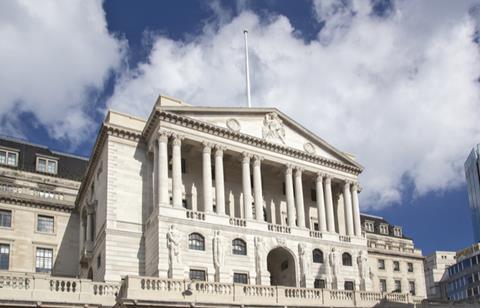
Bank of England has reported a mean gender pay gap of 19.5% for hourly pay as at April 2019.
The organisation, which currently has over 4,000 employees reported its gender pay gap data in line with the government’s gender pay gap reporting regulations.
The reporting regulations require organisations with 250 or more employees to publish the differences in mean and median hourly rates of pay for male and female full-time employees, the gap in men and women’s mean and median bonus pay, the proportions of male and female employees awarded bonus pay, and the proportions of male and female full-time employees in the lower, lower middle, upper-middle and upper quartile pay bands.
Due to the Covid-19 (Coronavirus) pandemic, gender pay gap reporting regulations have been suspended for the 2019/2020 reporting period, however, some organisations have chosen to do so voluntarily.
Bank of England's median gender pay gap for fixed hourly pay is 20.4%, as at March 2020. On average women, earn 80p compared to every £1 their male counterparts earn.
Its median gender pay gap for bonuses paid during the reporting period is 27%; which is a increase of 5% from the 22% gap in 2018. The mean gender pay gap for bonus payments is 22.5%, compared to 21% in 2018.
Over the reporting period, 92.8% of female employees and 92.1% of male employees received bonus payments. This is an increase of 1.5% and 2.3% since 2018.
Just under one-third (30%) of employees in the highest pay quartile at Bank of England are female, compared to 41.2% in the second quartile, 49.2% in the third quartile and 58.2% in the lowest pay quartile.
A spokesperson at Bank of England, said: "Based on our analysis, we consider that [employees] are paid equally for doing the same job at the bank. The main reason for our organisation-wide pay gaps continues to be an imbalance of male and female and non- black and ethnic minorities (BAME) and BAME colleagues across the Bank. While progress has been made, there are still fewer women and BAME [employees] in senior roles than men and non-BAME, and a higher proportion of women relative to men at lower [pay] scales.
"Addressing the disparity in representation across the bank will take time and we are working towards achieving our gender and BAME targets.
"This will have an impact on our pay gaps in future years. In the past year we have continued to embed inclusive recruitment throughout the organisation (such as through name-blind recruitment and our Career, and continued our efforts to ensure that we are nurturing diverse talent (for example, through our sponsorship scheme."











